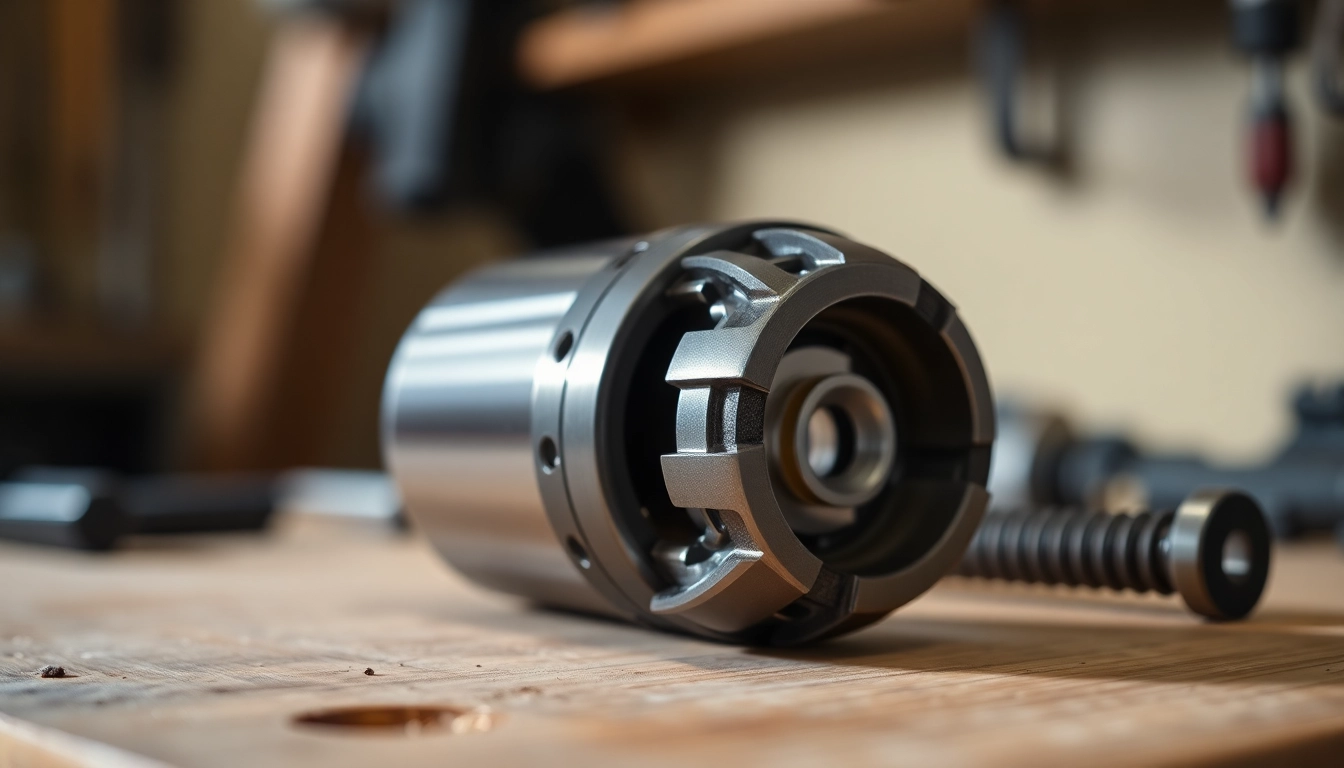
Choosing the Right Drill Chuck: A Guide to Precision and Performance
Understanding Drill Chucks
What is a Drill Chuck?
A drill chuck is a clamping device used to hold drill bits and other cutting tools securely in place on a power drill. This essential component connects the drill bit to the drill’s motor, allowing the power from the drill to be transmitted to the bit, thus enabling it to cut through materials. The performance and reliability of a drill are significantly influenced by the design and quality of the chuck used.
Types of Drill Chucks Explained
There are several types of drill chucks, each serving different purposes depending on the application, types of materials, and the user’s preferences. The most common kinds are:
- Keyed Drill Chucks: These chucks require a key to tighten or loosen the grip on the drill bit. They provide a secure hold, reducing the risk of slipping, which is especially important when working with harder materials.
- Keyless Drill Chucks: As the name suggests, these chucks do not require a key. You can tighten or loosen them by hand, which allows for faster bit changes. They are suitable for light to medium work, where precision isn’t as critical.
- Hybrid Chucks: These combine features from both keyed and keyless chucks. They may allow for quick adjustments while still providing a secure fit.
- Specialized Chucks: Some chucks are designed for specific applications, such as for mini drills, or chucks that adapt to different bit sizes or shapes.
Key Features to Consider
When selecting a drill chuck, there are several key features to assess:
- Capacity: Refer to the maximum and minimum bit sizes the chuck can accommodate, which determines its versatility.
- Material: The chuck material influences durability and performance. Steel or composite materials are typically robust.
- Type of Clamping Mechanism: Whether keyed or keyless, the mechanism should be easy to use and reliable.
- Concentricity: This measures how well the chuck holds the bit. High concentricity is crucial for precision work, as it affects the drill’s accuracy and the quality of the finished holes.
Benefits of High-Quality Drill Chucks
Impact on Drilling Precision
High-quality drill chucks dramatically enhance precision. Accurate hole placement is critical in various industries, from woodworking to metal fabrication. A reliable chuck ensures that the drill bit does not wobble during operation, maintaining a consistent cutting path and producing cleaner, more precise holes.
Durability and Longevity
The materials utilized in the construction of drill chucks significantly impact longevity. Quality chucks made from hardened steel or other durable materials can withstand greater wear and tear. Additionally, they typically have better resistance to rust and corrosion, promoting a longer usable life even under demanding conditions.
Efficiency in Handling
Efficiency is a substantial consideration when using power tools. High-quality drill chucks allow for quicker bit changes, reducing downtime and increasing productivity. Keyless models, in particular, enable users to swiftly swap bits with one hand, which is invaluable when moving between tasks or drill bits frequently.
How to Choose the Right Drill Chuck
Assessing Your Needs
Choosing the right drill chuck begins with assessing your specific needs. Consider the types of projects you typically undertake. If you’re a hobbyist, a keyless chuck may suffice. However, if you require precision work in a professional setting, investing in a high-quality keyed chuck would be prudent. Understanding the frequency of use and the variety of materials encountered will also guide your selection.
Comparing Keyless vs. Keyed Models
When deciding between keyless and keyed drill chucks, think about the trade-offs. Keyless chucks offer convenience and faster bit changes, making them ideal for projects requiring frequent adjustments. In contrast, keyed chucks provide superior clamping strength and precision, which can be essential for tasks demanding high accuracy. Evaluate the nature of your work to select the most suitable option.
Evaluating Size and Compatibility
Not all chucks fit every drill, so ensuring compatibility is vital. Pay attention to both the shank size of your drill bits and the mounting style of the chuck. Common sizes include 1/2 inch and 3/8 inch, but verify the specifications of your power tool to avoid purchasing the wrong chuck. An incompatible chuck can lead to inefficient drilling practices and potential damage to both the chuck and the drill.
Popular Drill Chuck Brands and Models
Top Choices for Professional Use
Professional users often turn to brands renowned for their quality and performance. Some of these include:
- Jacobs: Known for their robust and reliable keyed chucks, Jacobs models are widely used in industrial settings.
- Albrecht: Albrecht chucks are celebrated for their precision and quality, making them a go-to for applications requiring exact specifications.
- Röhm: With a focus on engineering excellence, Röhm provides options that enhance torque and concentricity.
Best Budget Options
For budget-conscious consumers, there are still effective and reliable drill chucks available that don’t compromise performance. Brands such as DEWALT and Bosch offer cost-effective options without sacrificing essential quality features.
Innovative Features in Current Models
Today’s drill chucks are more sophisticated than ever. Recent innovations include:
- Automatic Bit Locking: Some chucks now feature mechanisms that automatically lock the bit in place, enhancing safety during operation.
- Adjustable Torque Settings: Certain models allow users to adjust torque settings directly from the chuck, improving control while drilling.
- Integrated LED Lights: Visibility is improved with built-in lights that illuminate dark work areas, enhancing accuracy while maintaining safety.
Maintenance Tips for Your Drill Chuck
Cleaning and Care Practices
Regular cleaning and maintenance of your drill chuck are crucial for optimal performance. Here are best practices to follow:
- Keep it Dry: Moisture can lead to rust and corrosion. Always store your drill chuck in a dry environment and wipe it down after use.
- Remove Debris: After frequent drilling, debris can accumulate in the chuck. Using a soft brush or cloth can help remove such build-up without damaging its mechanism.
- Lubrication: Periodically oiling the chuck’s mechanism can enhance its functionality and longevity.
Identifying Wear and Tear
Constant usage can lead to signs of wear and tear on drill chucks. Common signs include:
- Difficulty in tightening or loosening the bit
- Wobbling or inconsistent drilling
- Visible damage or scoring on the chuck’s surface
When to Replace Your Drill Chuck
Knowing when to replace your drill chuck is vital for maintaining efficiency and safety. If you notice significant wear, difficulty in bit holding, or excessive wobbling during use, it’s time to consider a replacement. Investing in a high-quality chuck can mean the difference between achieving precise results and dealing with the frustration of poor performance.



